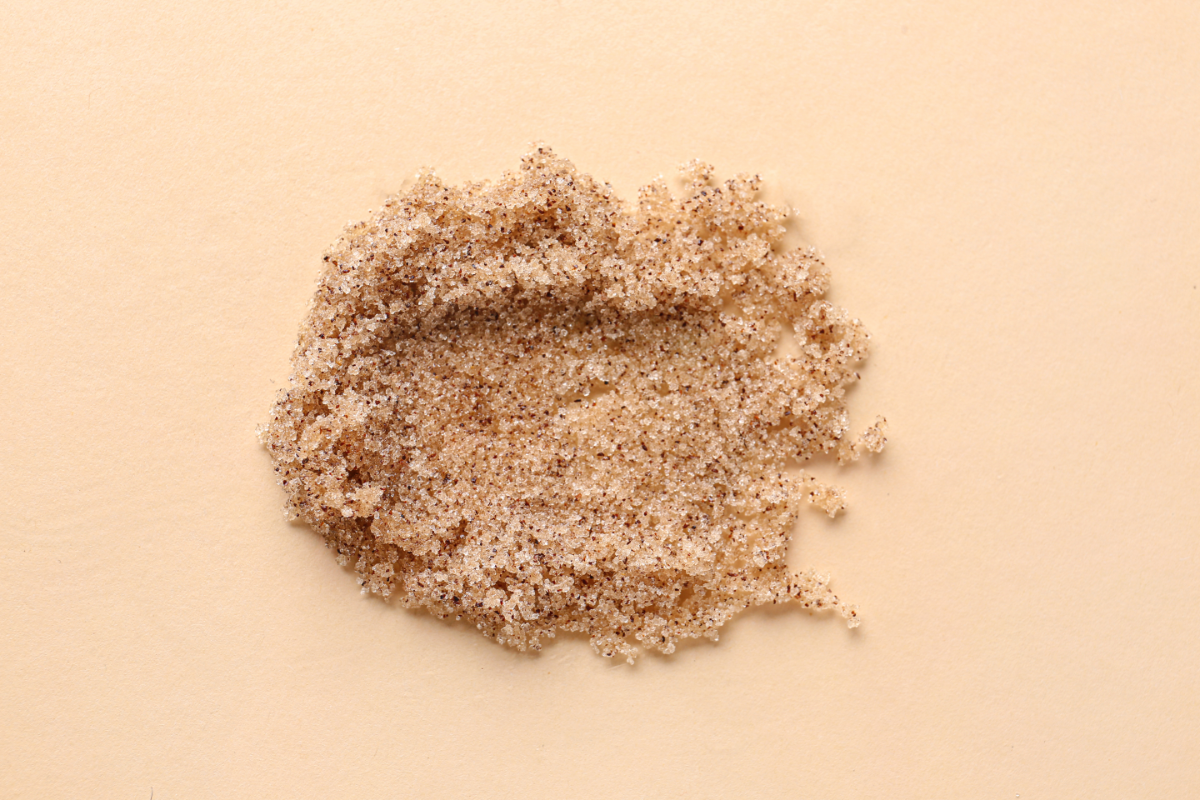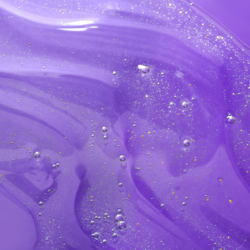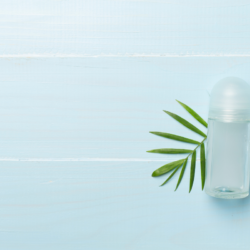For generations, the desire for perfect skin has spanned the ages, uniting great-grandmothers, grandmothers, mothers and daughters in a common quest. Finding the ideal moisturising product, combining effectiveness, ease of use, sensory pleasure and respect for the skin and the environment, is a constant preoccupation. But in the pursuit of healthy, radiant skin, we often overlook an essential link: beyond daily moisturising, a healthy lifestyle is crucial. A balanced diet, a good night’s sleep and adequate hydration, with at least 1.5 litres of water a day, are the pillars of our skin’s beauty and well-being.
However, at the heart of these habits, one gesture stands out for its significant impact:exfoliation. More than just a simple step, regular exfoliation is the secret to radiant, healthy skin, the sine qua non of radiant skin. This is why body exfoliation has become an essential part of our skincare routine. Here’s a look at the many benefits of exfoliation and its essential role in maintaining and caring for our skin.
What are the different roles of the skin?
As the largest organ in the human body, the skin performs a number of functions that are essential to our well-being and health.
Firstly, it acts as a protective shield against external aggression. This cutaneous barrier defends us against various elements such as physical shocks, pollution, pathogenic agents such as microbes, and harmful ultraviolet rays.
Secondly, the skin plays a key role in regulating the body’s temperature. Through its sweating and vasodilation mechanisms, it helps to maintain a stable body temperature, which is essential for the body to function at its best.
Under the effect of the sun’s UVB rays, the skin contributes to the synthesis of vitamin D3, a vital nutrient for many aspects of our health. Vitamin D3 is crucial for the immune system, as well as for the mineralisation and maintenance of healthy bones, joints and teeth.
Finally, another major role of the skin is the elimination of toxins. Through the process of perspiration, the skin helps the body to rid itself of waste products and unnecessary or harmful substances.
History and origins of body scrubs
A brief history of body scrubs
The history of body scrubs goes back to ancient times, when they were already an essential part of beauty and cleanliness rituals. The Egyptians, Greeks and Romans used pumice stones, sands and various mineral powders to purify their skin and improve its appearance. Over the centuries, this practice has been refined, incorporating natural substances such as sea salt, sugar and even crushed herbs, offering gentle, natural exfoliation. In the East, exfoliation is intrinsically linked to bathing rituals, particularly the famous hammam, where the use of black soap and a Kessa glove provides a deep, invigorating cleansing.
Various cultural traditions
Each culture has developed its own scrubbing methods, adapted to its environment and available resources. In Asia, for example, you’ll find scrubs made from rice or bamboo, which are renowned for their exfoliating properties and their ability to make the skin more radiant. The Ayurvedic traditions of India favour the use of plants and spices such as turmeric for their scrubs, aimed at purifying not only the skin but also the spirit. In America, indigenous peoples opted for scrubs based on corn and aromatic herbs, highlighting the regenerating and therapeutic virtues of these ingredients.
These traditional methods laid the foundations for modern exfoliating products, and continue to inspire today’s formulations, emphasising naturalness and effectiveness. The integration of these ancient practices into contemporary products is a testament to their timeless effectiveness and their ability to meet skincare needs across the ages.
What are the different types of scrubs available in pharmacies?
Exfoliation is a skin care technique that comes in several forms, each adapted to specific needs. Scrubbing methods vary according to the desired action and the ingredients used, ranging from physical exfoliation to more complex processes involving chemical or enzymatic reactions.
Physical exfoliation
Physical exfoliation, also known as mechanical exfoliation, uses solid particles to polish the skin. Exfoliating agents such as sugar, salt, coffee or ground apricot kernels are massaged into the skin to dislodge and remove dead cells. This direct action smoothes the skin’s surface and improves its texture. It is particularly appreciated for its immediate effectiveness and can be easily customised according to the degree of abrasion required.
Chemical scrub
In contrast to mechanical exfoliation, chemical exfoliation works at a molecular level. Acids such as glycolic, salicylic or lactic acid dissolve the bonds between dead cells, making it easier to remove them without rubbing. These types of scrubs are effective in treating a range of skin problems, such as blemishes, pigmentation spots and signs of ageing. They do, however, require careful use and sometimes the supervision of a dermatology professional.
Enzymatic scrub
Enzymatic exfoliation is a gentle form of chemical exfoliation. Using enzymes naturally derived from fruits such as papaya (papain) or pineapple (bromelain), this type of scrub breaks down the proteins of dead cells without the use of strong acids. Enzymatic scrubs are particularly suitable for sensitive skin because they exfoliate without irritation, leaving the skin soft and renewed.
Exfoliation eliminates impurities
The epidermis, the outermost layer of the skin, is made up of protective cells called keratinocytes. Constantly renewing themselves, these cells migrate to the surface, only to fall off and make way for new ones. The primary aim of an exfoliating scrub is not only to eliminate these dead cells, but also to radically purify the surface of the epidermis. Exfoliation rids the skin of the excess sebum, sweat and impurities we encounter on a daily basis. These elements tend to clog pores and create imperfections such as hyperpigmentation, pimples, etc. Rid of the impurities that dull the skin’s radiance and the toxins that suffocate it, the skin regains a smooth, silky texture. In this context, “new skin” is not just an expression!
Exfoliation helps blood vessels to function properly
Exfoliation is renowned for its beneficial mechanical action on blood circulation. The circular movements used during application promote not only exfoliation, but also oxygenation of the epidermis and lymphatic drainage. These effects are due to the physical stimulation that accompanies exfoliation, encouraging better superficial blood irrigation.
Coarse-grained scrubs, such as those enriched with salts or sugars, can help smooth the skin’s appearance by removing dead cells and improving skin texture. These products can also be formulated with essential oils or plant extracts, which provide additional benefits thanks to their antioxidant and soothing properties.
When used regularly, exfoliation can indeed contribute to the appearance of smoother, firmer skin, but it must be integrated into an overall skincare regime that includes nutrition, hydration and physical activity for optimum results.
Exfoliation enhances tanning
Whether you’ve decided to tan naturally or opt for a self-tanner, exfoliation is one of the prerequisites for working on your tan. Your skin texture will be refined and clean, and your tan will be more even and last longer. Rêve de Miel Gommage Gourmand Nourrissant Corps by Nuxe guarantees soft, luminous skin. Its moisturising action helps to maintain and make your tan last.
Exfoliation reinforces the effectiveness of skin care products
Exfoliation is a recognised precursor for optimising the effectiveness of skincare products applied after exfoliation. By eliminating dead cells and impurities, it prepares the skin to better absorb the active ingredients contained in moisturisers, nourishing oils and other targeted skin care products. As a result, the freshly exfoliated epidermis is more receptive, which can potentially enhance the action of skincare products applied afterwards.
As far as slimming treatments are concerned, it’s important to clarify that exfoliation itself has no intrinsic slimming properties. However, by refining the skin’s texture and improving its texture, exfoliation can actually prepare the skin to better receive and respond to specific treatments, such as those designed to reduce the appearance of cellulite.
A scrub such as Cosmetic Gommage Sel Marin by Somatoline can be beneficial in a slimming skin care routine, complementing a balanced diet and physical exercise. Its exfoliating particles of different sizes can contribute to a smoother epidermis and better surface circulation, two factors which, combined with an effective anti-cellulite massage, can help to improve the appearance of the skin.
Exfoliation makes hair removal easier and prevents ingrown hairs
Exfoliation plays an important role in preparing the skin for hair removal and can help prevent ingrown hairs. Well-exfoliated skin allows hairs to grow freely on the surface of the skin, reducing the risk of them curling and re-entering the epidermis, a phenomenon that leads to ingrown hairs.
Before a hair removal session, exfoliation facilitates hair removal by making the skin smoother, which can make hair removal more effective and potentially less painful, as hairs are less likely to resist when pulled. However, it is advisable to exfoliate a few days before waxing rather than just before, to avoid skin irritation.
It is advisable to make exfoliation part of a regular skincare routine, exfoliating once or twice a week to keep the skin soft and healthy. Exfoliation should be performed on clean skin, using circular movements, starting at the ankles and gradually working upwards to stimulate blood circulation.
In addition to its benefits for hair removal, this practice is also a sensory experience that brings relaxation and well-being, transforming skin care into a special moment of relaxation. It’s essential to choose products that are suited to your skin type and to follow the appropriate steps for a scrub that is both pleasant and beneficial to the skin’s beauty and health.
How do I choose the right scrub for my skin type?
Exfoliation must be adapted to each person’s skin type to maximise the benefits while minimising the risk of irritation or damage. Depending on whether your skin is sensitive, oily or dry, the choice of products and the frequency of exfoliation sessions will vary.
Scrubs for sensitive skin
Sensitive skin requires special care when exfoliating. It’s essential to choose gentle exfoliants that won’t further irritate the skin. Scrubs containing fruit enzymes, such as papain or bromelain, are preferable as they offer exfoliation without abrasion. It is also advisable to opt for fragrance-free and hypoallergenic formulations. The use of soothing ingredients such as aloe vera can be beneficial, and the frequency of exfoliation should be limited to avoid over-stimulating the skin.
Scrubs for oily skin
Oily skin benefits greatly from regular exfoliation. Due to increased sebum production and a tendency to acne, exfoliating with ingredients that have astringent and purifying properties can help control shine and reduce breakouts. Salt- or sugar-based scrubs, mixed with essential oils such as tea tree or lemon, can be particularly effective. However, it is important not to over-exfoliate to avoid stimulating even greater sebum production.
Scrubs for dry skin
Dry skin can be made more supple and hydrated with scrubs that incorporate nourishing oils. Sugar-based scrubs are often enriched with plant oils such as coconut or sweet almond oil, which help to moisturise and protect the skin barrier while removing dead skin cells. Gentleness is the watchword when it comes to exfoliating dry skin, and post-exfoliation moisturising is crucial for retaining moisture in the skin.





